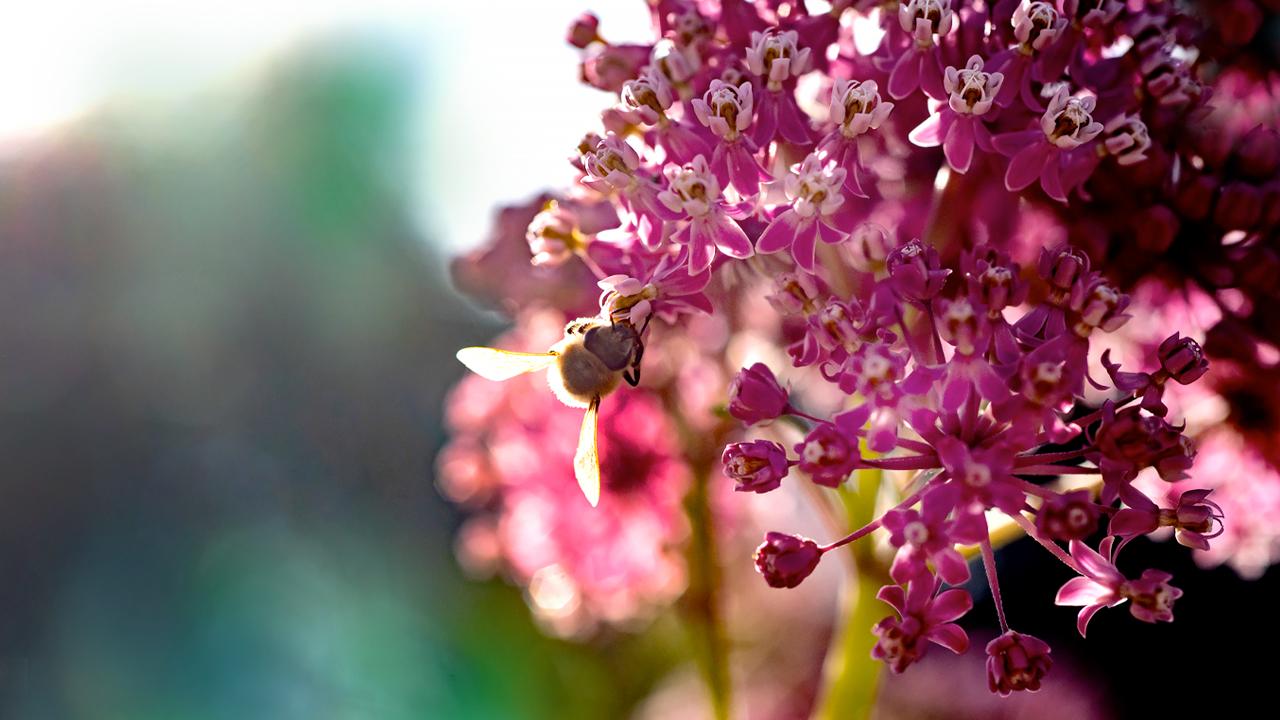
Laboratories and Equipment
Equipped for Research and Education
The Daniel F. and Ada L. Rice Plant Conservation Science Center provides sophisticated laboratories for research in a wide array of plant science disciplines, and teaching facilities critical to the Garden’s efforts to train the next generation of plant scientists. Within the Plant Science Center’s labs, more than 200 Ph.D. scientists, research associates, adjunct scientists, and college students are making vital discoveries about plant survival, habitat destruction, and restoration.
Abbott Ecology Laboratory
From measuring plants to assessing their environment to growing them under different environmental conditions, scientists in the Abbott Ecology Laboratory pursue many avenues of research. They are aided in their quest to understand native habitats by the lab’s specialized microscopes and an automated analyzer. The combined space for the Ecology Laboratory and Population Biology Laboratory is 2,400 square feet.
Astellas Economic Botany Laboratory
The Astellas Economic Botany Laboratory and the Harris Family Foundation Plant Genetics Laboratory together are 2,000 square feet; the genetics lab contains specialized equipment, such as a DNA sequencer, for scientists incorporating molecular biology techniques into their research. Using this equipment, scientists in the Astellas Economic Botany Laboratory can screen genetic diversity of plants and conduct collaborative research with major centers at universities, or with private or federal laboratories to investigate possible medicinal properties.
Harris Family Foundation Plant Genetics Laboratory
A combination of molecular and quantitative techniques enables Garden scientists to understand the level and distribution of genetic diversity within rare and endangered species. A DNA sequencer is helping these researchers gain an understanding of the molecular genetics of such plants, ultimately enabling plant populations and their habitats to be better managed and preserved.
ITW Plant Systematics Laboratory and Nancy Poole Rich Herbarium
Plant systematics is used as a basis for fields as diverse as restoration, medicinal research, and historic climate changes. Supporting this work is the preparation, mounting, and accessioning of new herbarium specimens. A herbarium is a historical record, documenting what plants grew where and when.
The herbarium has the capacity to house approximately 70,000 specimens and currently holds more than 14,000 accessioned specimens.
Population Biology Laboratory
When scientists, interns, and graduate students in the Population Biology Laboratory examine factors affecting plant reproduction, they may conduct experiments in two Growth Chambers (funded by the D & R Fund). The chambers are each approximately 10 feet by 10 feet and feature bottom-lit shelving for plants, temperature and humidity controls, and a watering system. One chamber can release carbon dioxide, enabling scientists to assess how future plants will likely respond to a planet with increased atmospheric levels of the gas. Plants may be in the growth chamber their entire life cycle—which may last from a few months to a couple of years—or they may be evaluated for six months before set out in the field for further study.
Reproductive Biology Laboratory
Under what conditions do seeds germinate? How long can they be stored and remain viable? The 700-foot Reproductive Biology Laboratory is where scientists and graduate students discover the answers to these questions. In addition to learning more about the reproductive process, they can replace seeds displaying diminished viability with new collections. Alternatively, existing seeds may be removed from the seed bank to grow new plants, from which seeds may be harvested for the collection.
Samples of seeds stored in the Dixon National Tallgrass Prairie Seed Bank are tested in this lab to determine how their viability—or ability to grow—holds up over time.
Soil and Soil Preparation Laboratory
Together, the Soil Laboratory and Soil Preparation Laboratory cover 1,200 square feet and provide a closed environment for soil research. The Soil Preparation Lab is used for receiving, storing, and processing soils. The Soil Lab proper contains equipment for soil analyses, including microscopes (light, dissecting, FTIR), plate readers, balances, centrifuges, gels, rigs, and a C/N combustion analyzer.
The Dixon National Tallgrass Prairie Seed Bank and National Tallgrass Prairie Preparation Laboratory
Healthy seeds brought to the Seed Quarantine Room are separated from other plant material, then cleaned and analyzed for moisture content, weighed, and counted. A fume hood ensures that any contaminants are sequestered and filtered out. All but about 25 seeds (which are sent to the Reproductive Biology Laboratory) are slowly dried to 15 percent humidity, carefully labeled and packaged in heat-sealed foil containers, and—finally—stored in the Dixon National Tallgrass Prairie Seed Bank at -20 degrees Celsius. The Chicago Botanic Garden has committed to collecting 30 million seeds from 1,500 native species across the Midwest.
Josephine P. & John J. Louis Foundation Microscopy Laboratory
Whether scientists are studying individual plant fossil remains or interpreting data revealing trends in plant populations, the Josephine P. & John J. Louis Foundation Microscopy Laboratory provides essential technical support and welcome space for research activities. Scientists have access to microscopes fitted with digital image capture and analysis systems, a fluorescent microscope, and GIS equipment (the latter of which was made possible by a grant from the National Science Foundation).
The GIS Laboratory
Researchers take GPS units into the field to record precise locations of individual plants or plant populations. Then, using GIS, they overlay other types of data—soil types, amount of rainfall, presence ofother plant species, and similar—to answer questions or make predictions.The GIS Lab is dedicated to becoming a regional center for spatial analysis and cartographic production promoting collaboration with regional partners in spatial analysis, research, teaching, and training in support of plant conservation and restoration ecology.

